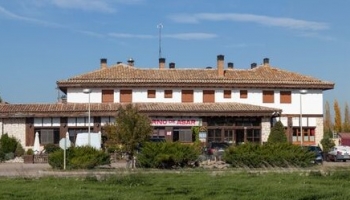

Cultural resource
Monument
The parish was dedicated, at first, to Our Sra. La Antigua; however, later (sixteenth and seventeenth centuries) it came to be called La Asunción de Ntra. Sra.
In the nineteenth century, this church belonged to the Bishopric of Osma despite being in the province of Burgos. Until 1956, when they became dependent on the current Diocese of their province.
The parish of the Asunción de Nuestra Señora, Presents an almost baroque interior for the most part. The temple has a single nave divided into four sections, with vaults of geometric decoration and central finials. At the back is the choir and on the side a small chapel that holds the altarpiece of Santo Cristo opens.
On May 13, 1693, permission is granted to carry out the Chapel of Santo Cristo de Pedrosa. It is done at the expense of the contributions of the Council and the Brotherhood of Vera Cruz, which bear the costs that may be incurred.
In the year 1723 a reform of the Church is carried out, data that is conserved, in the arch that appears in the ascent to the presbytery of the Church. The vaults of the nave, made in the Baroque century, are rich geometric tracery with lunettes supported by arches fajones. From the building it throws up the magnificent tower, lady of the moor and guardian of the loaves and the vineyards. Already with the rank of Villa, in 1726, Pedrosa did not delay to coat his temple with altars, images and paintings.
The Factory Book does not clarify who was the author although the experts mention the teacher Juan Félix de Rivas. Four very ornate columns, as befits the most lively baroque, frame the youthful and triumphant carving of María Asunta. The dorado is generous. The altarpiece is completed with a painting by Nuestra Señora of La Encina, of artistic interest and dated in 1740.
Location
Suggestions
Winery
Haza
Restaurant
Aranda de Duero
Accommodation
Caleruega
Shop
Castrillo de la Vega
Museums
Caleruega
Leisure
Aldeayuso











